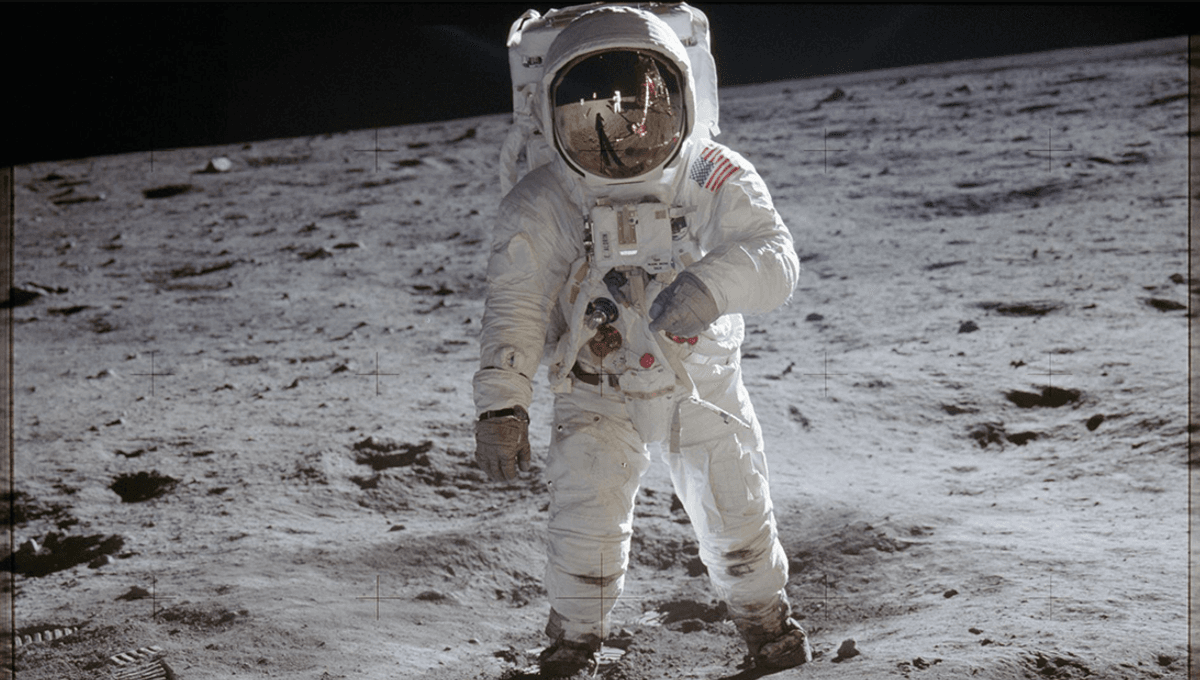
On July 20, 1969, Neil Armstrong stepped out of the Apollo 11 Lunar Module “Eagle” and delivered one of the most iconic speeches of the 20th century.
The speech and subsequent Moon walk were broadcast around the world to an estimated 650 million people. The quality of the video was somewhat lacking, giving you a real sense that the footage was being sent back from around 386,000 kilometers (240,000 miles) away, from the lunar surface. But you may not be aware that there was more high-quality footage, and that it was instantly available here on Earth.
“As Neil Armstrong descended from the ladder to take that historic first step, hundreds of millions of viewers watched spellbound as the drama unfolded. NASA had given them something they had never seen before: a man walking on the moon via live television,” NASA explains.
“What most people did not realize, however, is that the television footage they viewed was actually inferior to what ground station engineers saw as the raw footage arrived from the moon 250,000 miles away. While the public saw blurry, ghostlike images, the engineers working at NASA’s tracking stations in California and Australia saw clear, crisp video on special television monitors capable of displaying the unconventional video.”
Unfortunately, the task of broadcasting that footage to the world, and live, required some compromises.
“Although NASA engineers knew that the scan converter would degrade the original picture quality, they viewed it as an engineering trade-off. NASA wanted live television and the only way to provide it at the time was with scan-conversion technology, despite the degradation.”
Since the astronauts returned to Earth, first spending 21 days in quarantine, we have gained high-quality photos and footage from the Moon’s surface. But what happened to that original footage, which was viewed and stored by engineers at the ground stations shortly after the first humans set foot on the Moon? Unfortunately, in a problem familiar to anybody who was alive in the 1980s/1990s VHS era, the answer is “we taped over it”.
In 2006, NASA admitted that it had lost the original recordings, prompting a three-year search by Richard Nafzger, a NASA engineer who oversaw television processing during the Apollo 11 mission. The conclusion to that search was that the tapes were part of a 200,000-strong batch of tapes that had been “degaussed” or magnetically erased.
We do have restored footage, even though the original tapes were lost.
“We’re all saddened that they’re not there. We all wish we had 20-20 hindsight,” Nafzger told NPR at the conclusion of the search.
“I don’t think anyone in the NASA organization did anything wrong,” he added. “I think it slipped through the cracks, and nobody’s happy about it.”
The reason for the erasure was simple: satellites. After a space boom, we suddenly had a lot of them, constantly sending back data to Earth that needed to be recorded. Without enough magnetic tapes to store the data during a shortage, NASA began erasing old tapes in order to record the data.
Thankfully, we do still have the lower-quality footage, which has been lovingly restored and enhanced, even if we are missing out on the first Moon landings in all their glory.
Source Link: After Three Years Of Searching, NASA Realized It Recorded Over The Apollo 11 Moon Landing Footage